Following are quick answers and/or links to answers to additional resources for various frequently asked questions about EVs and EV charging stations and networks. If you are a journalist or analyst seeking some specific statistics, send an email to loren @ mvc.3f2.myftpupload.com with details on what you are looking for.
Q. How many electric vehicles are on the road in the United States?
A. According to Auto Alliance/IHS Market, through December 31, 2019, 1,046,840 EVs have been sold in the US since 2011.
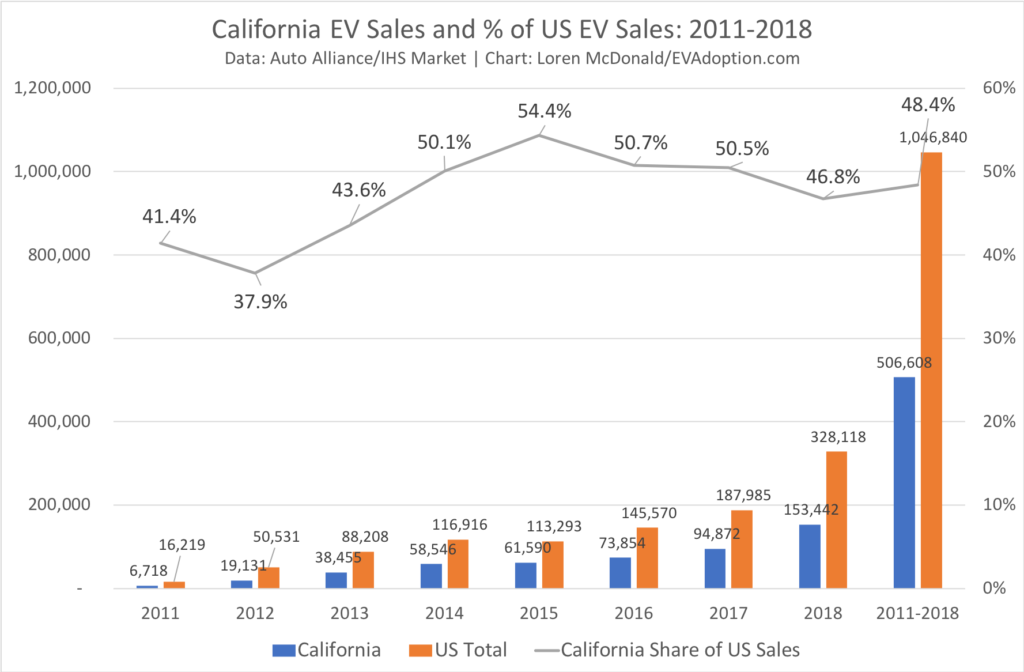
Q. What is the electric vehicle (EV) market share of new vehicles purchased in the US?
A. Using data from IHS Market via Auto Alliance, 2018 US EV (includes both BEVs and PHEVs) market share of new light vehicles purchases was 1.96%, up from 1.2% in 2017. California reached 7.84% in 2018. (see EV Market Share By State)
Q. What percent of electric vehicle sales in the US are from California?
A. California accounted for 46.8% of all US EV sales in 2018. (see blog post)
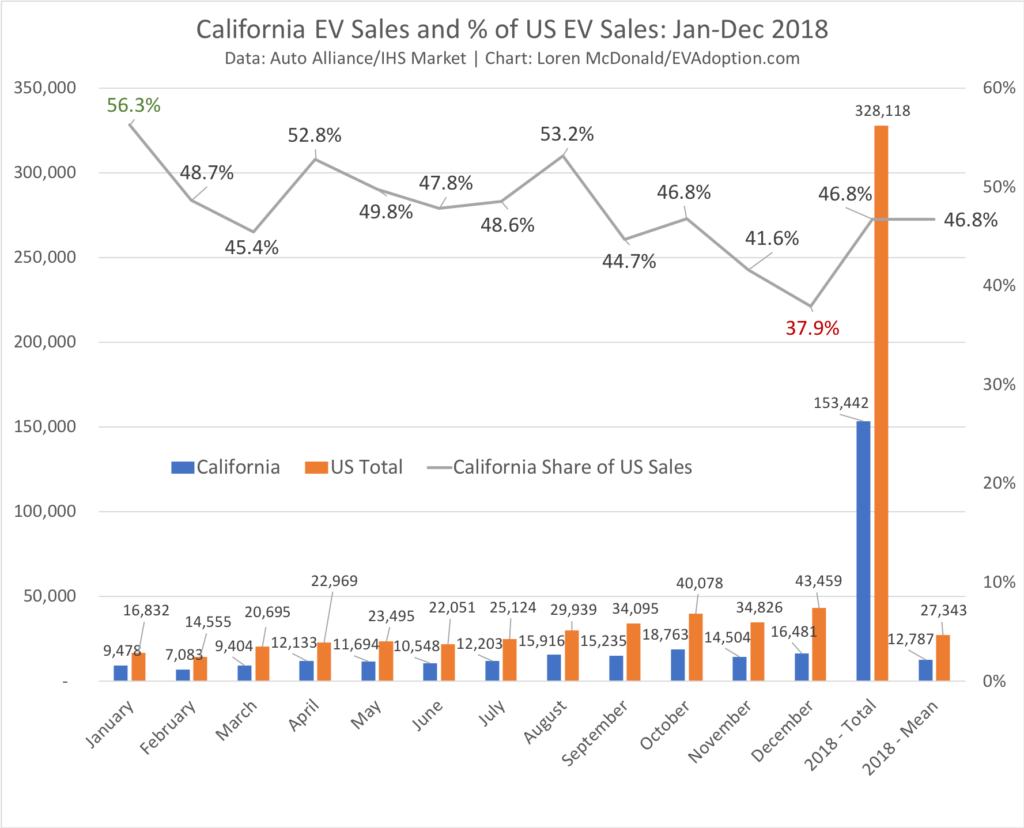
Q. How many different EV models are currently available in the United States?
A. As of April 11, 2019 there are 39 EV models available for sale in the US. 14 of these are BEVs and 25 are PHEVs.
Q. What is the difference between a BEV and PHEV?
A. PHEV – Plug-in Hybrid Electric Vehicle: “PHEVs” are hybrids, often with longer-range battery capacity than non-plug-in hybrids, whose batteries can be charged by plugging them into an electrical outlet or charging station. Electric power-only range varies from only 11 miles of the Mercedes C350e to the a high of the Honda Clarity PHEV at 47 miles.
BEV – Battery Electric Vehicle: “BEVs” are electric vehicles that operate on 100% battery power. They are also often referred to as “all electric vehicles” to differentiate them from PHEVs. Examples include the Nissan Leaf, Tesla Model S, X and 3, BMW i3, Chevrolet Bolt and more. In the US there are currently 14 BEVs available.
Q. How many public Level 2 and DC fast chargers are there in the US?
A. As of March 31, 2019 there were 50,438 public Level 2 charging connections and 9,898 DC fast charging connections.
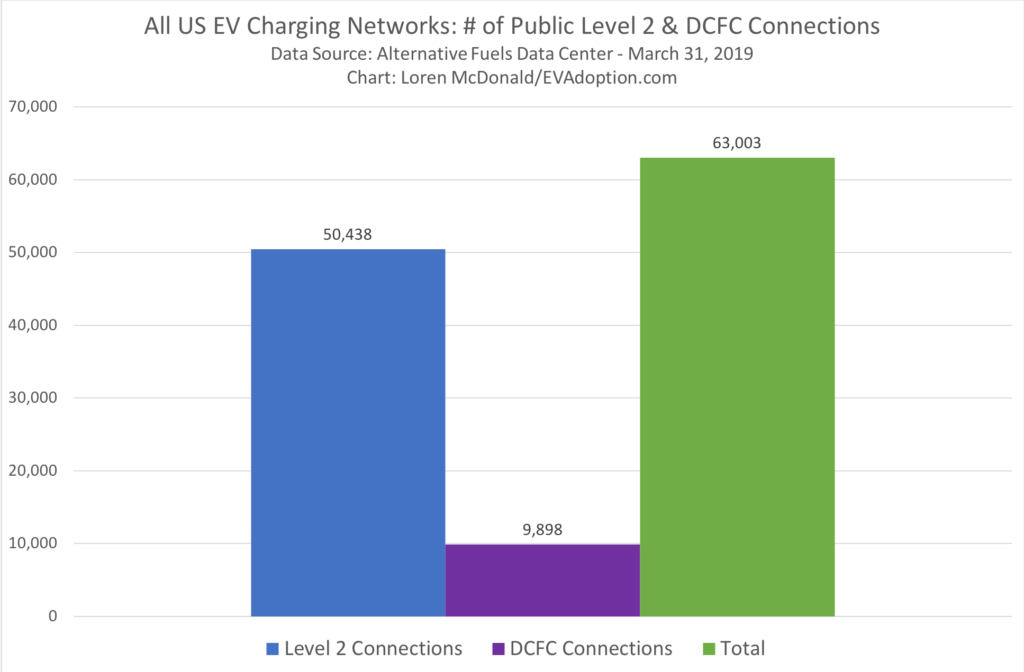
Q. How many Tesla SuperCharger and Destination Charger stations and locations are in the US?
A. As of March 31, 2019 Tesla has 5,666 Superchargers (DC fast charging stations) installed at 618 locations.
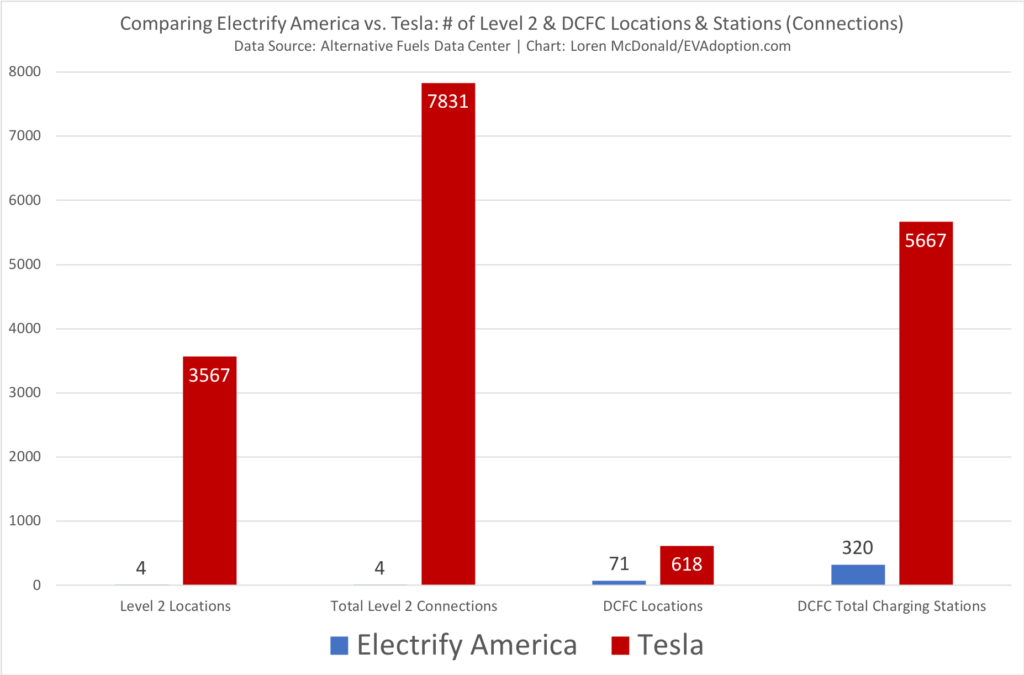
Q. How many DC fast charging stations do each of the major charging networks have in the US?
A. Tesla with 5,667 and EVgo at 1,999 stations are the dominant DC fast charging networks in the US.
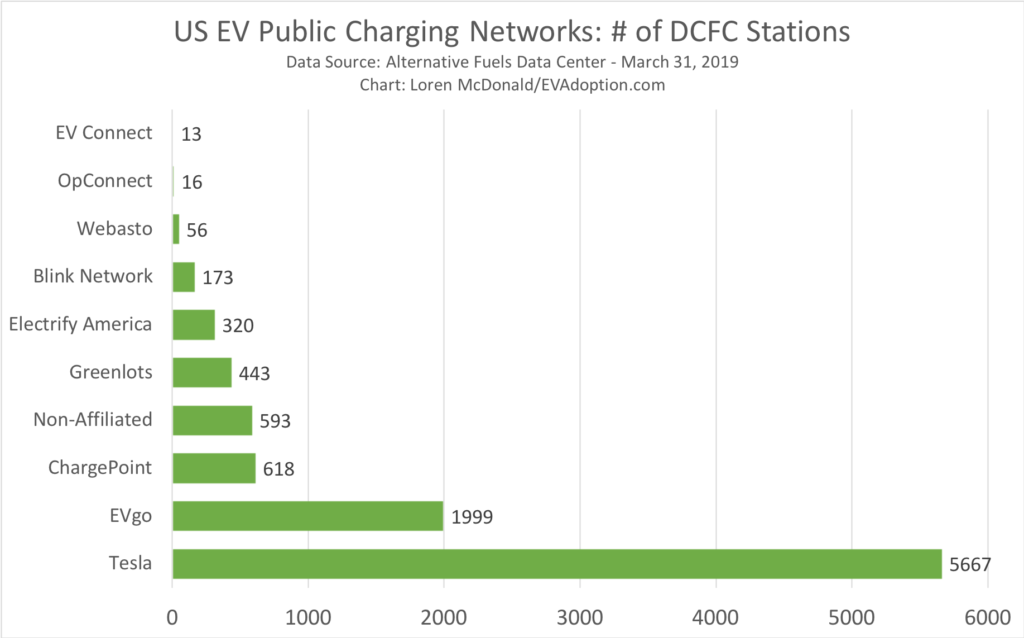
Q. What is the average range of BEVs in the US?
A. As of April 2, 2019 and when including all variations of the Nissan LEAF and Tesla Models, the average BEV battery range is 210 miles, while the median range is 234 miles.
h
Q. Which plug-in hybrid (PHEV) has the longest battery only range?
A. As of March 2019, the Honda Clarity has the longest range of any PHEV with 47 miles. The Chevrolet Volt had been the PHEV with the highest range until GM ceased production of the car on February 15 2019.
Q. How is the Federal tax credit amount determined for each EV that qualifies for the program?
A. The answer is in a simple formula that the IRS uses that is based on the size of the battery pack. The formula is as follows:
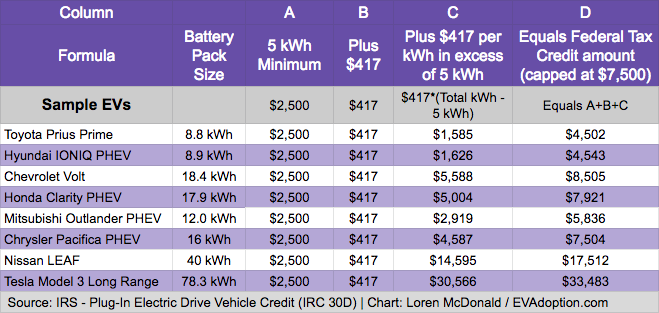
© 2024 EVAdoption, LLC | All Rights Reserved.